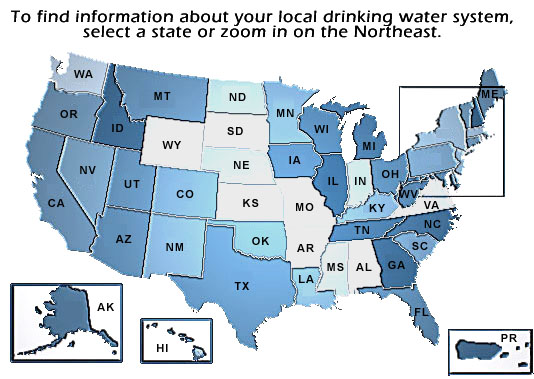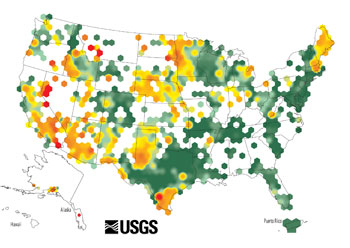FAQ: Why
should I check my urinary free radical MDA (Malondialdehyde)?
A: BECAUSE IT IS WHAT PROFESSIONAL, PEER
REVIEW PUBLISHED RESEARCH USES TO MEASURE THE EFFECTIVENESS OF ANTIOXIDANTS, AND TO MEASURE THE OXIDATIVE STRESS
IN THEIR PATIENTS.
The following is a small sampling of a very large body of published research that shows the usefulness of
understanding urinary MDA levels in the body, and how they are an excellent guide to nutritional health.
 Full Abstracts are at End of List: Full Abstracts are at End of List:
1. JOURNAL NAME- Toxicology VOL. 189 NO.
1-2 July 15th 2003PP. 75-88.
Research by: Department of Surgery, University of Texas Southwestern Medical
Center
Malondialdehyde levels are used in this research as a determining
factor of free radical mediated cell injury in burn trauma.
2. JOURNAL NAME- Clinical Biochemistry
VOL. 36 NO. 5 July 2003PP. 397-400.
Department of Biochemistry, Medical Faculty
of Istanbul
, University of Istanbul , Capa, 34093, Istanbul , Turkey , Turkey
Study was to determine oxidative stress increase in aging. Increased MDA
levels was a key determining factor in support of the presence of increased oxidative stress in elderly
subjects.
3. JOURNAL NAME- Molecular Medicine (Baltimore ) VOL. 8 NO. 10 October 2002PP. 581-590.
Inotek Pharmaceuticals, Suite 419E, 100 Cummings Center, Beverly, MA, 01915,
USA
In this study of peroxynitrite as being implicated in the pathogenesis of many inflammatory conditions oxidative
stress was a central measurement of the study. MDA was the sole means used to
measure oxidative stress.
4. JOURNAL NAME- Gynecologic Oncology
VOL. 86 NO. 3 September, 2002PP. 250-258.
School of Medicine , University of Extremadur , Avenida Elvas s/n.,
06071, Badajoz
, Spain
In this study of the effect of ovariectomy, increases in MDA make the
determination that uterine oxidative stress is increased.
5. JOURNAL NAME- Clinical Biochemistry VOL. 35 NO. 4 June, 2002PP. 269-273.
Department of Clinical Biochemistry, Faculty of Medicine, Kocaeli University of
Kocaeli, Kocaeli, Turkey
These findings indicate oxidative stress in patients with chronic renal failure which is further exacerbated by
hemodialysis and CAPD, as evidenced by increased lipid peroxidation (MDA) and low antioxidant levels.
6. JOURNAL NAME- Biomedical Research (Aligarh ) VOL. 12 NO. 3 September-December, 2001 PP.
231-236.
E-14, GTB Hospital Campus, Dilshad Garden, Delhi, 110095, India
Oxidative stress status was determined by measuring the concentration of urinary
malondialdehyde ( MDA ) … Since the measurement of MDA in urine gives a 'global' index of the body's oxidative stress
status,
our results suggest that there is increased
oxidative stress ….
7. JOURNAL NAME- Metabolism VOL. 52 2003 Jul PP. 868-74
Nutrition/Infection Laboratory, Beth Israel Deaconess Medical Center , Harvard Medical School , Boston , MA 02215 , USA .
Levels of malondialdehyde ( MDA ) and total glutathione to were used to
assess oxidative stress.
8. JOURNAL NAME- Am J Physiol Renal Physiol VOL. 284 2003 Apr PP.
F863-9
Indiana University School of Medicine and
Richard L. Roudebush Veterans Affairs Medical Center, Indianapolis, Indiana 46202, USA.
Oxidative stress to lipids and proteins was measured by an HPLC assay for malondialdehyde (MDA) and carbonyl concentration,
respectively. “Urinary
measurements of markers of oxidative damage to lipids and proteins appear to be more sensitive than plasma
measurements in patients with CKD.”
9. JOURNAL NAME- J
Appl Toxicol VOL. 22 2002 Sep-Oct PP. 303-9
Department of Biochemistry, The Medical School, Afyon Kocatepe University, Afyon-03200,
Turkey.
The oxidative effects of ultraviolet A (UVA) light (320-400 nm) and the antioxidant effects of quercetin were
examined. Oxidative stress is reflected by increased MDA and reduced
antioxidant enzyme levels.
10. JOURNAL NAME- Am J Physiol Heart Circ Physiol VOL. 282 2002 Apr PP.
H1197-205
Department of Physiology and Biophysics, School
of Medicine, University of Mississippi Medical Center, Jackson , Mississippi 39216 , USA .
Levles of malondialdehyde are described as a marker of oxidative
stress.
These ten articles partially scratch the surface of validating the Malondialdehyde (MDA) urine test.
Check for yourself. Follow the link PubMed.gov and type "Malondialdehyde urine" in the search box. You will
be amazed at the number of research articles for this test!
Abstracts of the above ten journals are available in the following links:
- Malondialdehyde
Malondialdehyde levels are used in this research as a determining factor of free radical mediated cell injury in burn trauma.
- Oxidative Stress
Study was to determine oxidative stress increase in aging. Increased MDA levels was a key determining factor in support of the presence of increased oxidative stress in elderly subjects.
- Malondialdehyde Arthritis Colitis
Malondialdehyde (MDA) was the sole means used to measure oxidative stress in this study.
- MDA Oxidative Stress
In this study of the effect of ovariectomy, increases in MDA make the determination that uterine oxidative stress is increased.
- MDA Lipid Peroxidation
Oxidative stress in patients with chronic renal failure which is further exacerbated by hemodialysis and CAPD, as evidenced by increased lipid peroxidation (MDA) and low antioxidant levels.
- Oxidative Stress MDA
Oxidative stress status was determined by measuring the concentration of urinary malondialdehyde ( MDA ).
- Malondialdehyde Oxidative Stress
Levels of malondialdehyde ( MDA ) and total glutathione to were used to assess oxidative stress.
- Oxidative Stress Malondialdehyde
Urinary measurements of markers of oxidative stress and damage to lipids and proteins appear to be more sensitive than plasma measurements in patients with CKD.
- MDA Oxidative Stress
Oxidative stress is reflected by increased MDA and reduced antioxidant enzyme levels.
- Oxidative Stress Malondialdehyde
Levles of malondialdehyde are described as a marker of oxidative stress.
Click here to add the Free Radical Test /
Antioxidant Test to your PayPal Cart.
Return from Free Radical Laboratory Validation 1 to Free Radical Test.
| 

 Full Abstracts are at End of List:
Full Abstracts are at End of List:






